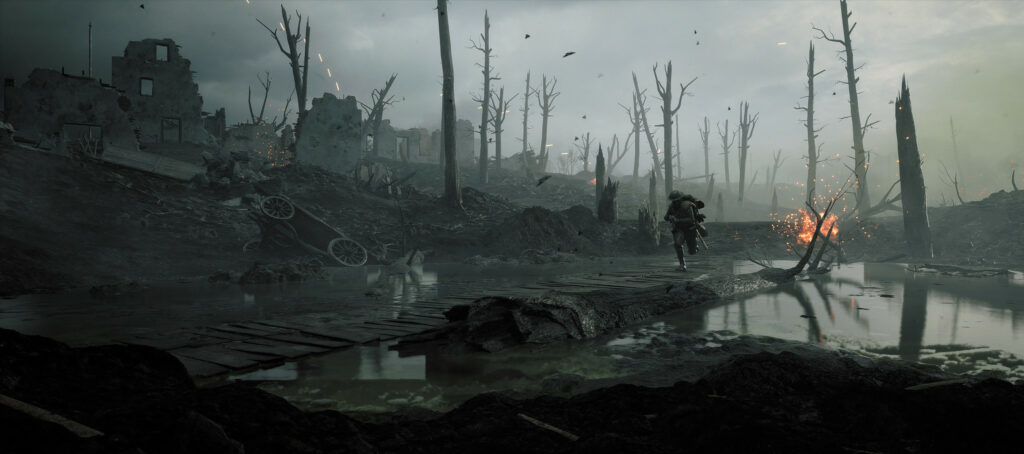
TWs: explicit content, trauma, violence and death, war tactics, and graphic content.
I have a particular interest in World War I. Even though I am an historian of African history, World War I is one of my other historical interests. Did you know that five million horses died during World War I? Machine guns were strapped to the back of horses before tanks were invented. World War I was a social, political, and technological turning point for the entire world.
This image is a recreation of the Battle of Passchendaele, also called the Third Battle of Ypres, that occurred in 1917 during World War I. This was one of the most horrific battles of the First World War, with Flanders getting record amounts of rain that year, turning the battlefield into toxic mud-filled shell holes.
I paired this image with a powerful song from 2Pac. He started this song with a Shakespeare quote about cowards and soldiers. In this song, Tupac rapped about the senseless violence he experienced. He recognized that his life was fragile, and accepting death was a harsh necessity in his life. He wondered what heaven would be like, as a person who lived the “thug life”.
The themes in this song of senseless violence, the fragility of life, living with so much death, and the feeling that you’ve done wrong mirror experiences felt by soldiers in WWI, particularly those that fought on the front lines. In some areas of the front, soldiers were constantly barraged for months at a time. Soldiers at Passchendaele dealt with not only illness-inducing conditions, but also artillery shelling, poison gas, and mud that drowned and killed their friends. Tupac’s songs illustrate how he practically lived in a war zone; the soldiers at Passchendale in 1917 did, too. The meaning of the song, as well as the meaning of the image, have been both slightly augmented and enhanced.
One soldier that lived through the Battle of Passchendaele wrote poems about his experience. The way humans deal with trauma through art is timeless and universal.
I died in hell — They called it Passchendaele.
Memorial Tablet by Siegfried Sassoon is licensed under Attribution-ShareAlike 4.0 International (CC BY-SA 4.0)


Annelise! This so good. Thank you for sharing one of your interest with us in such a creative way. Historical battles are not topic I find very interesting, but the addition of the song from 2Pac adds so much energy to the topic. I really love the connections you made between him and the soldiers at Passchendale. The audio and picture are both transformed through the comparisons and given new meanings. Great work!
This is some deep stuff, Annelise. Really moving. First off, great work on the post. The marriage of the image to the sound is fitting, and the parallels you draw between Tupac’s “war” and WWI are fascinating. I can tell you enjoy both topics, and I greatly appreciate the history lesson, music lesson, and poem from one of the soldiers who fought and lived through Passchendaele. Indeed, the expression of human trauma through art is timeless and universal. Amazing work!
Annelise,
Your post offers a profound reflection on the parallels between art, history, and human experience. The connection you draw between the themes in Tupac’s music and the harrowing realities of World War I is both striking and insightful. It’s a powerful testament to how art can transcend time and space to echo the sentiments of soldiers facing the unimaginable.
The Battle of Passchendaele stands as a grim reminder of war’s brutality, and it’s fascinating how you link these historical events with modern expressions of struggle and adversity. Coming personally from Greece which participated and suffered with casualties from both WW, those pictures and the stories behind are real and we still feel very close and very involved historically…The use of poetry and music as tools to process and articulate trauma shows their enduring role in our attempts to comprehend such experiences. Thank you for sharing this thoughtful perspective.